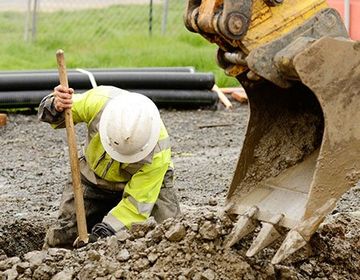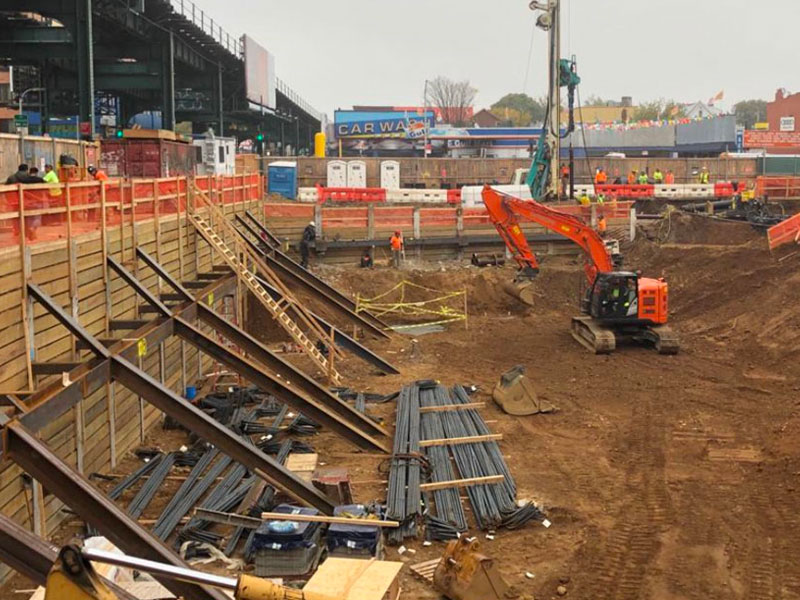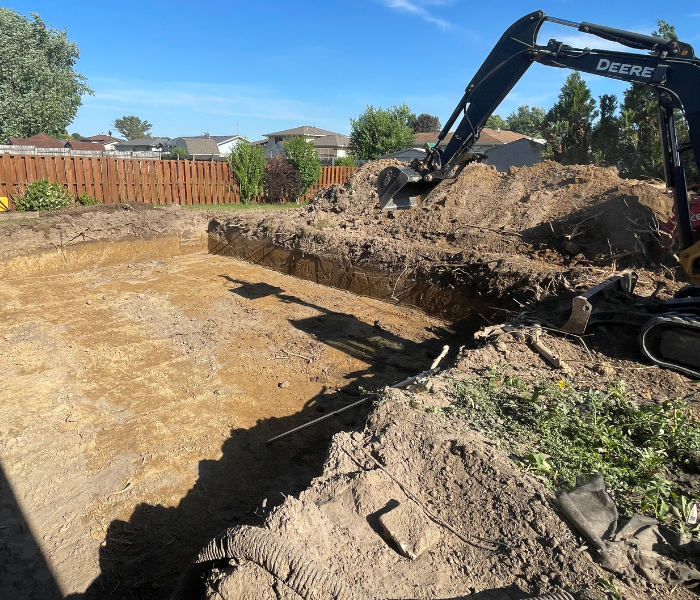Lancaster Trenching - Professional Trenching Solutions in Lancaster, Ohio
Thorough Expedition: The Science Behind Superior Excavation Practices
The realm of excavation techniques is a domain name where science intertwines with craftsmanship to unearth the secrets hidden under the earth's surface. From ancient hand devices to modern hydraulic excavators, the advancement of excavation methods has been a testimony to human ingenuity and technological advancements. What really sets premium excavation methods apart is a deep understanding of geological concepts, combined with the usage of cutting-edge devices and approaches. By discovering the science behind these techniques, we can discover the secrets that exist beneath our feet and value the precision and knowledge that enter into every dig.
Evolution of Excavation Techniques
Throughout background, the advancement of excavation methods has actually played a critical duty beforehand building techniques and historical explorations. From the primary devices used by our forefathers to the advanced equipment employed in contemporary times, the development of excavation techniques has considerably transformed just how we come close to numerous projects.
In old times, manual work with basic devices such as wheelbarrows, shovels, and pickaxes was the main approach of excavation. This labor-intensive process limited the deepness and extent of excavations, frequently resulting in slow development and limited accessibility to specific websites. As people advanced, so did the tools and techniques used for excavation.
The Industrial Change marked a transforming point in excavation practices with the introduction of steam-powered equipment. In modern times, innovation plays a crucial function in excavation, with advancements like General practitioner systems, drones, and 3D scanning enhancing precision and effectiveness in the field.
Function of Technology in Excavation

The integration of sophisticated innovation has basically transformed the field of excavation, boosting accuracy and effectiveness to unprecedented degrees. Among the crucial technological developments that has considerably impacted excavation techniques is the utilization of GPS systems. These systems enable precise mapping of excavation websites, allowing operators to properly locate below ground energies and structures. Furthermore, the usage of telematics in excavation equipment has actually enabled real-time tracking of machine performance, bring about positive upkeep and raised functional productivity.
In addition, the arrival of 3D modeling and simulation software application has streamlined the planning process for excavation tasks. Operators and engineers can currently imagine the whole excavation process before breaking ground, identifying possible difficulties and maximizing process. Together with this, the application of drones in excavation activities has facilitated aerial surveys, volumetric dimensions, and site examinations with unequaled speed and accuracy.
Geological Principles in Excavation
An understanding of geological concepts is important for making sure the structural integrity and security of excavation websites. Geological aspects play an essential duty in establishing the usefulness and safety of excavation tasks.
Additionally, the geological framework of the area, including mistakes, cracks, and rock formations, should be meticulously evaluated to determine prospective dangers and difficulties. Excavating near geological fault or unstable rock formations can result in instability and possible risks. By carrying out extensive geological studies and analysis, designers and excavators can develop methods to minimize dangers and ensure the successful conclusion of excavation jobs. Ultimately, including geological concepts into excavation methods is critical for attaining secure, reliable, and lasting outcomes.

Most Current Tools for Excavation
In the world of excavation methods, modern technologies in devices have actually reinvented the efficiency and precision of excavation processes. One of the most up to date devices making waves in the sector is the use of drones furnished with advanced imaging technology. These drones can provide detailed aerial studies of excavation sites, offering real-time data on topography and potential hazards. This information aids in much better preparation and decision-making throughout the excavation procedure.
One more cutting-edge tool obtaining appeal is the execution of 3D printing technology for creating customized excavation equipment. This enables the production of specialized devices that are customized to the details demands of a task, raising performance and reducing downtime.
Furthermore, improvements in materials scientific research have brought about the development of more powerful and much more resilient excavation tools. lancaster excavation. Tungsten carbide-tipped excavator add-ons, for instance, offer exceptional performance in challenging ground conditions, boosting productivity on-site
Science's Influence on Excavation Practices

Furthermore, scientific research study on dirt mechanics and geotechnical engineering has supplied valuable understandings right into soil actions, permitting excavation professionals to make educated choices concerning excavation techniques and dirt stabilization strategies. On the whole, science proceeds to drive development and renovation in Visit Your URL excavation practices, making excavation projects much more reliable, economical, and lasting.

Verdict
To conclude, the advancement of excavation methods has been substantially affected by developments in innovation and a much deeper understanding of geological principles. The current tools and tools used in excavation have enhanced effectiveness and accuracy in the area. The application of scientific knowledge has substantially boosted excavation techniques, causing more lasting and effective methods for excavating numerous kinds of products.
In the world of excavation methods, modern innovations in devices have reinvented the performance and accuracy of excavation procedures. By leveraging scientific concepts, the excavation market has actually been able to considerably boost performance, accuracy, and safety and security in excavation procedures. GPR enables excavation groups to non-invasively scan and map subsurface frameworks, energies, and potential threats, allowing them to prepare excavation tasks with better precision and reduced danger of mishaps.
Additionally, scientific research on soil technicians and geotechnical engineering has given useful understandings into dirt behavior, permitting excavation specialists to make best site educated choices regarding excavation methods and dirt stablizing techniques. In general, scientific research continues to drive development and improvement in excavation practices, making excavation projects extra reliable, economical, and lasting.